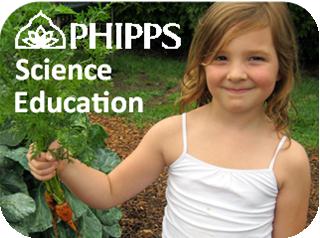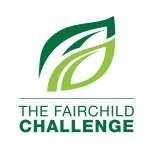If there is one segment of society that is often misunderstood, it is people who work in science fields. Public perception of scientists tends to lean towards lab coats, crazy hair and beakers full of chemicals, especially in the eyes of children. In reality, most scientists are just regular people who want to make the world a better place through scientific discovery. The best way to dispel the myth that scientists are boring or crazy is to get to know them; the purpose of this segment is to talk with real scientists to ask them what they love about their jobs and why they think their work is fun and important.
It’s a new year with new scientists! For our next installment in this series, we sat down with BIA Fellow Chelsie Romulo. The Botany in Action Fellowship program at Phipps fosters the development of the next generation of plant-based scientists who are committed, first, to excellent research, and second, to educational outreach. The BIA program provides Fellows with funding for use towards field research in the US or abroad and a trip to Phipps, to engage in science outreach training and opportunities to share his or her research to public audiences. Chelsie is in her first year as a BIA Fellow, researching the aguaje palm in the Amazon rainforest.
We interviewed Chelsie about her childhood playing outside, her love of bees, and the time that she climbed up a palm tree:
Introduce yourself and your work in 5 sentences or less.
My name is Chelsie Romulo and I am a doctoral candidate in the Environmental Science and Policy Department at George Mason University. I study the economy and ecology of a palm called aguaje that grows in the Amazon rainforest. This species is found in peatlands that can store large amounts of carbon and it produces a fruit that is a very important food source for many animals. I am interested in how the fruit market affects the distribution and ecology of the tree, especially since people cut down the tree to harvest the fruit. My research tries to understand how people who harvest, buy, sell, and eat the fruit make decisions and how their choices affect management of the species.
Why did you become a scientist?
As a child my favorite activities consisted of mucking about in creek beds and overturning rocks and logs, and then bringing home critters that I had found. They would then be placed in tanks all over the house, as well as my mother’s potted plants and eventually released where they had been found. Over the years I watched with fascination as many tadpoles and caterpillars transformed into frogs and butterflies. My mother has always been an avid gardener and encouraged us to dig in the dirt and admire living things with her. I’ve always been fascinated with nature and watching things grow and spending as much time outside as possible. Though I’ve never wanted to do anything else except be a scientist, I was surprised at the diversity of options within the field of life sciences. I never would have guessed that I would be studying the economics of an Amazonian fruit but I love being where I am today.
What part do plants play in your research?
My research focus is on the aguaje palm tree (Mauritia flexuosa) that grows in the Amazon Rainforest. The trees produce a fruit that is an important food for animals and is also eaten whole, or processed into ice cream and juice, by people in the Peruvian Amazon. This tree also grows in peatlands that have the potential to store a lot of carbon dioxide.
What is the most exciting thing you have ever done at work?
During the summer of 2013, while working with a colleague setting camera traps in the forest, we had the chance to climb an aguaje tree. We used a harness developed by a group of local people who were committed to find a more sustainable harvest method. It was much scarier and dirtier than I had ever imagined. You have one strap around your waist and your foot in another loop, hanging dozens of feet up in the air! Having that experience really helps my perspective when talking to harvesters about their decision to cut or climb a tree. Here is a picture:
What skills do you use in your job?
People skills are very important. I depend on a lot of people to get my research done, both in the United States and abroad. I have to be able to communicate effectively to a variety of different people, and sometimes in Spanish! Spanish language would be another skill as well, since I need to communicate with my colleagues and field technicians in Peru. It also helps to stay fit throughout the year because tromping through heavily forested swamps can tire you out quickly.
What is your favorite part of your job?
I love meeting new people whose research is similar to mine and sharing new information with each other. Part of being a scientist is spending your life learning and sharing new things.
If you weren’t a scientist, what job would you choose?
I think if I wasn’t a scientist I would want to be a beekeeper. Actually, I am already a beekeeper, but I just have a few hives as a hobby. I could watch them for hours and hours. Actually, I would probably just be another type of scientist. I can’t imagine not being a scientist.
Why is science education important?
Science is the way that we explain and describe our world, so science education is very important. Science education is needed to help people understand how we got to where we are and why scientists say one thing or another. It is also important because all people need to be thinking critically about how we interpret observations and reach our own conclusions. I think that some people are intimated by science and scientists and this causes a barrier to communication and understanding. It is part of our job as scientists to help people understand and enjoy science, and contribute to science education. For my project specifically I am working with people who harvest, buy and sell aguaje fruit in the Amazon rainforest. Many of these people are less than a high school education, so it is up to me to help them understand what my research means for them and the future of their business in the fruit trade.
Chelsie is a great example of someone who turned a childhood love of nature into an adult career. Research shows that children who spend significant time in nature are more likely to develop positive environmental attitudes as adults. To learn more about the power of nature on child development, check out this blog post.
Follow Chelsie’s adventures in research at her blog!
The above photos are used courtesy of Chelsie Romulo.













